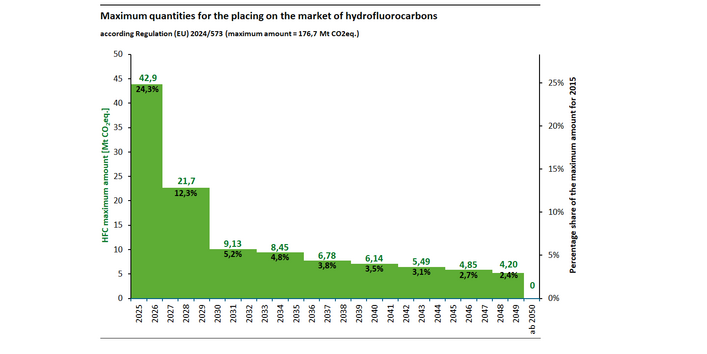EU Regulation 2024/573 on fluorinated greenhouse gases
After consent of the European Parliament (EP) and the Council, Regulation (EU) 2024/573 on fluorinated greenhouse gases and repealing Regulation (EU) 517/2014 was published on 20 February 2024. The Regulation entered into force on 11 March 2024. The additional implementation rules issued by the European Commission remain valid until new implementation rules are issued.
Since the new EU F-Gas Regulation 2024/573 came into force on 11.03.2024, a licence has been required for the import and export of the substances listed in Annexes I - III of the Regulation as well as products and equipment containing these substances. This is independent of the quantity of substances. The licence is issued by the European Commission, which requires registration in the F-Gas Portal.
The Federal Government revised the Chemicals – Climate Protection Ordinance (ChemKlimaschutzV) in 2014 and adopted penalty provisions in an amended Chemicals Sanction Ordinance (ChemSanktionsV). Both regulations will be adapted to the new EU regulation as soon as possible but will continue to apply until then.
The federal states are responsible for enforcing Regulation (EU) 2024/573, the implementing regulations and the associated national regulations. A list of the competent authorities of the federal states can be found on the website of the Working Group on Chemical Safety (BLAC) ((Thema „Chemikalien-KlimaschutzVerordnung“).
Competent authority for Germany according the Regulation (EU) 2024/573 is Mr Sebastian Schnatz (Federal Ministry fort he Environment, Nature Conservation, Nuclear Safety and Consumer Protection; P.O. Box 120629; 53048 Bonn;Tel: +49 228 99 305-2274; sebastian.schnatz@bmuv.bund.de)
